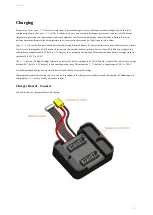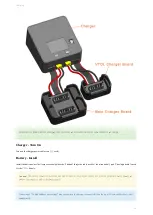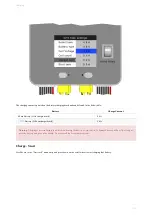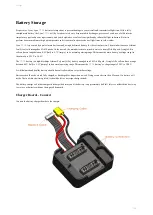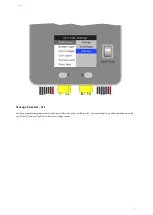
Battery Storage
Proper care of your Lynx
batteries is important to prevent damage to your aircraft and to maximize flight time. With a fully
charged main battery, the Lynx
will fly for about two hours. Frequent altitude changes, presence of wind, use of old batteries,
temperature, payload power requirements, and your height above sea level can significantly reduce the flight endurance. Batteries
perform better at medium or high air temperature and it is normal to observe shorter flight times in cold weather.
is powered by a pair of main batteries and a single dedicated battery for the vertical motors. The main batteries use Lithium
Ion (LiIon) cells arranged as 9Ah 3S packs. In the aircraft, the main batteries are joined in series to create 9Ah 6S pack. A single LiOn
cell can have a range between 4.2V (full) to 2.7V (empty) in its normal operating range. This means the main battery’s voltage range (in
the aircraft) is 25.2V to 16.2V.
The
battery is a high-discharge Lithium Polymer (LiPo) battery arranged as a 1.45Ah 6S pack. A single LiPo cell can have a range
between 4.2V (full) to 3.3V (empty) in its normal operating range. This means the
battery’s voltage range is 25.2V to 19.8V.
A well-balanced and healthy battery should have all cells within a very similar voltage.
Batteries should not be stored fully charged, or discharged for longer than a week. Doing so can shorten their life span. If a battery will
not be flown within that time period, it should be left at a storage charge instead.
The battery charger will either charge or discharge the battery until the battery is approximately half full, this is considered the best way
to store your batteries when not being used frequently.
Charger Boards - Connect
Connect the battery charger boards to the charger.
Storage
138
Summary of Contents for Lynx VTOL
Page 6: ...Package Contents Package Contents 6...
Page 18: ...3 Right click on the USB Serial Port and select properties Getting Started 18...
Page 19: ...4 Swap to the Port Settings tab and select Advance Getting Started 19...
Page 86: ...Landing 86...
Page 87: ...Payloads Standard Mapping Payload Multispectral Mapping Payload Custom Payloads Payloads 87...
Page 94: ...Standard Mapping Payload 94...
Page 108: ...Mounting Custom Payloads 108...
Page 110: ...Post Processing Geo Tagging PPK Tagging Base Station Reference Stations Post Processing 110...
Page 114: ...Geo Tagging 114...
Page 130: ...Battery Charging Charging Storage Battery Management 130...
Page 136: ...Second Battery Start Charging 136...
Page 143: ...Second Battery Start Storage 143...
Page 149: ...Replacing the Main Propeller 149...
Page 167: ...Getting Logs 167...
Page 171: ...2019 02 11 Ensure the landing checklist matches the GCS landing checklist Manual Changelog 171...








